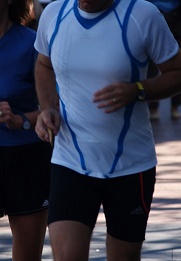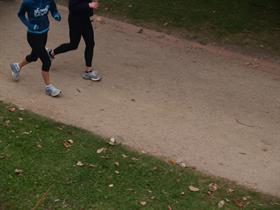
Become an Industry Leader in Fitness.
Professionally trained experts, in the health and fitness industry, view fitness testing as a necessity. In order to be able to develop a coherent and achievable fitness programme for individuals or classes, the instructor, trainer or fitness leader must first acquire knowledge of the person/people they will be working with. By gathering information they can ensure current health problems are identified and are therefore not exacerbated through inappropriate exercise, or they may learn of previous or additional ongoing training being undertaken which may limit or affect the programme of training which is designed.
This course will help you to cevelop basic fitness testing skills so you can confidently develop safe and successful training programmes.
Important Prerequisites: Health and Fitness I or a recognised fitness leaders certificate.
There are 8 lessons in this course:
- Fitness and Wellbeing
- Defining terminology
- What is wellbeing
- Emotional or mental health
- Structural health
- Chemical health
- Natural body cycles
- Why exercise
- Enhancing normal health with exercise
- Food combining
- Exercise at different stages of life
- Stabilizing metabolism during middle age
- Exercise for disease prevention
- Old age
- Understanding and managing stress
- Fitness Physiology and Anatomy
- Anaerobic energy supply
- Lactic acid energy
- Aerobic energy supply
- Energy needed for different types of activity
- Muscles: how muscles move, types of muscle
- What muscle causes what movement
- Problems during exercise: fatigue,
- Management of Fitness Testing Services
- Reasons for fitness testing
- Safety
- First aid
- Legal liability
- Negligence
- Providing protection
- Designing Fitness Tests
- What should be tested
- Sequence of testing
- Body weight, Water, Fat testing
- Cario respiratory endurance
- Muscle strength and endurance
- Criteria for designing fitness tests
- Procedure for constructing a new fitness test series
- Resistance Training
- Principles of resistance training
- Principles of exercise
- Overload principle
- Specificity
- Types of resistance training
- Developing an Exercise Programme
- Features of an exercise program
- Typical design process
- Types of exercise
- Developing physique
- Cardiorespiratory endurance
- Structure of an aerobic training session
- Managing an Exercise Programme
- Training response
- Exercises for specific problems: back, shoulders, trunk, arms,legs
- Weight control
- Energy expenditure
- Leading a Fitness Programme
- Leadership concepts
- Leadership responsibilities
- Shared leadership
- Leadership communication
Each lesson culminates in an assignment which is submitted to the school, marked by the school's tutors and returned to you with any relevant suggestions, comments, and if necessary, extra reading.
HOW TO EVALUATE FITNESS
Some tests may cause a degree of fatigue, and as such can affect the results of tests which follow (eg. An aerobic test which requires raising the heart rate for a prolonged period may tire the subject, and affect any following tests which require a muscular effort. Mild warm up activity however may loosen the joints and result in better results in a flexibility test).
Body Weight
A record of gains & losses in body weight over time reflects various aspects of fitness.
Water
When a person exercises and sweats, there is an immediate loss of water, which lowers body weight. This is however normally replaced when they later take in fluids. If water lost is not replaced, the body functions are impaired. There may be weight loss, but this is not healthy weight loss.
Fat
Real weight loss is distinctly different to water loss. It can be due to fat being used as fuel in exercise, and the body fat % thus dropping. The weight of an adult person can vary on a day to day basis by as much as 1.5 kilograms (ie. approx. 3 pounds). If changes in body weight are to be monitored closely and with optimum accuracy, measurements should be taken at the same time of day, using the same equipment and under the same (or similar environmental conditions. Varying these factors can result in a variance in the results. Measurements of particular areas tend to be more accurate for determining weight loss.

EVALUATING CARDIO RESPIRATORY ENDURANCE
Sustained muscular activity is possible only through the effective functioning of the heart, blood vessels, and lungs. Tests involving vigorous physical movement that make increased demands on the heart and lungs have been devised as sound measurement of cardio respiratory endurance and health.
Most field tests of cardio respiratory endurance utilise running, jogging, or walking. Studies have aimed at determining how long a person must work to provide accurate results. Dr Bruno Blke, a physiologist, has demonstrated that an adequate estimate of your aerobic capacity is possible after as little as 10 minutes of maximal work. Other studies confirm the duration of a running test must be between 10 and 20 minutes to provide reasonable estimates of aerobic capacity. This is because if shorter runs, such as 600 yards or even a mile, are completed in less than 8 to 10 minutes much of the energy used comes from anaerobic sources.
As the duration of a "best‑effort" run increases, the demand on the anaerobic energy component is less, and it decreases to less than 10% after 10 minutes. The significant point is that if maximum work is performed for 10 to 20 minutes, the predominant energy source is dependent on the utilisation of oxygen; thus an adequate estimate of one's aerobic capacity will result.
Five fitness classifications are provided below to assist you in rating yourself according to the time required to run a 1.5 mile distance (for some) or a 2 mile distance (from men). In addition, because the time to run these distances correlates very well with your maximal oxygen uptake, estimates of your aerobic capacity are given in accordance with your running times.